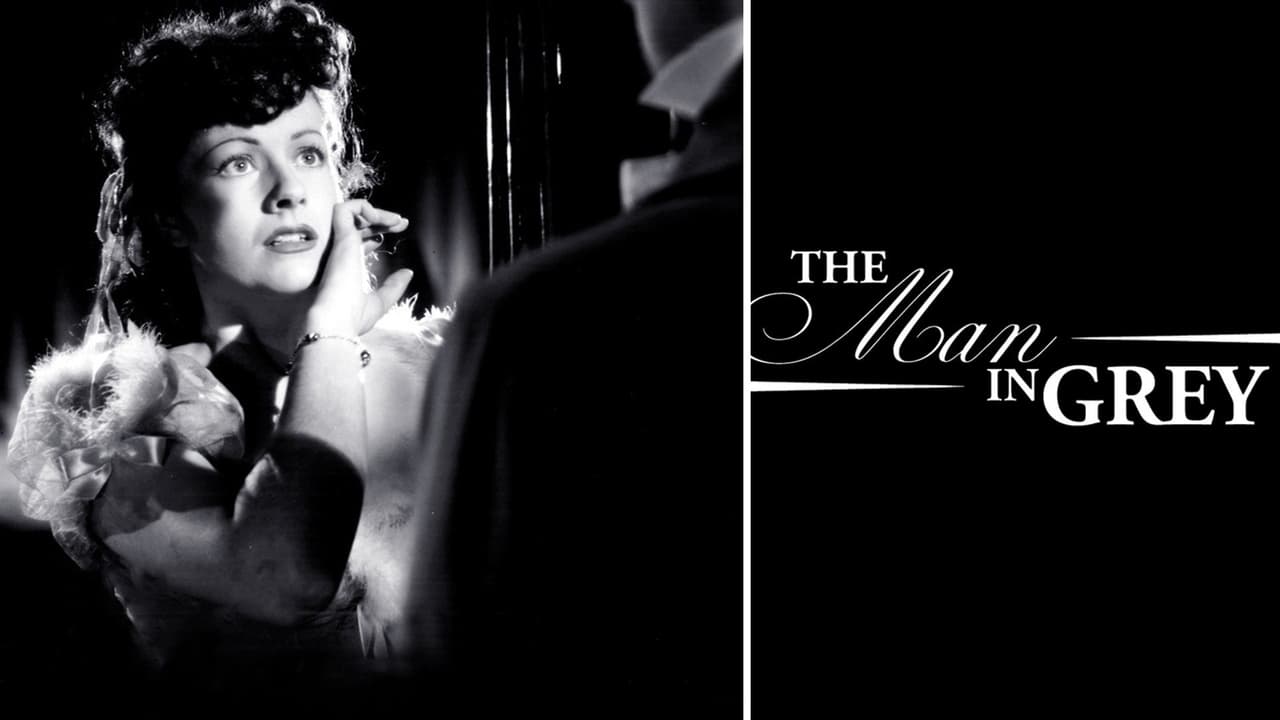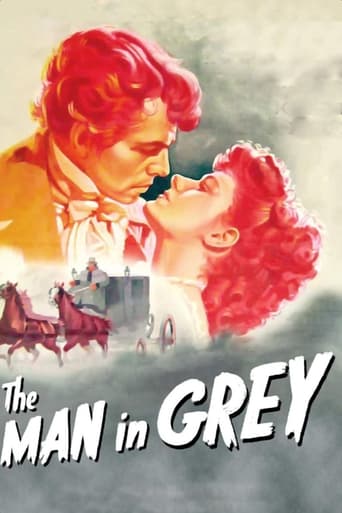

Don't listen to the Hype. It's awful
... View MoreAmateur movie with Big budget
... View MoreA Major Disappointment
... View MoreThe thing I enjoyed most about the film is the fact that it doesn't shy away from being a super-sized-cliche;
... View MoreProducer: Edward Black. Executive producer: Maurice Ostrer. (The U.K. version is available on an otherwise excellent Network DVD. The full-length version seems to have vanished).A Gainsborough Picture, copyright 30 November 1945 by Universal Pictures Co., Inc. U.S. release through Universal. New York opening at the Winter Garden: 29 November 1945. U.K. release through General Film Distributors: 23 August 1943. Australian release through Gaumont British Dominions/2Oth Century-Fox: 12 October 1944. 10,812 feet. 120 minutes. (The full-length version was released only in Australia. In the U.K., the film was cut to 116 minutes, in the U.S.A., to 93 minutes).SYNOPSIS: When the home of the Rohans is being sold up, Lady Clarissa Rohan meets a young airman from Jamaica, Rokeby, who tells her that his mother's ancestor was in love with the nineteenth- century Clarissa Rohan; and in flashback we see . . .NOTES: Number seven at British ticket windows for 1943. The film did less well in Australia, but was still a big success, coming in at number thirty-one for 1944.It was inevitable that such a colossal box-office success be followed by some sort of "sequel". This followed in 1944 when Calvert, Mason and Granger were re-united for Fanny by Gaslight (pointedly re-titled Man of Evil in the U.S.A.). The Wicked Lady, which re-teamed Lockwood and Mason with writer/director Arliss, appeared in 1945.COMMENT: Superbly photographed and most expansively produced with dazzling sets and period costumes galore, "The Man in Grey" is directed with such style and occasional inventiveness (taking full advantage of its magnificent sets and liberal production values), that one's mind and certainly one's eye are distracted from the penny-dreadful plot. (One's ear, alas, is still assailed by some choice samples of cumbersome dialogue).More than competent acting by a sterling cast of players also helps immeasurably. Lockwood is perfectly cast as the wicked lady, Calvert is in her element as the hapless and hopeless heroine, while Mason snarls delightfully as the surly "grey", and Stewart Granger (not always photographed too flatteringly) wanders along in top tongue- in-cheek form as a winning librarian until smothered by the excessive demands of a ridiculous plot. A wonderful group of support artists lend their talents too, among which one must single out Martita Hunt as a fussy schoolmistress, Helen Haye as Mason's resigned if dutiful mother, Beatrice Varley as a slipsy Gypsy, Jane Gill-Davis as Calvert's genteel mother, Raymond Lovell as the somewhat dithery prince regent, and Ann Wilton as the put-upon teacher, Miss Edge.Despite the absurdities and excesses of its script (doubtless directly derived from the original novel), such lavish squandering of talent and money has produced a most enjoyably escapist slice of quasi- historical melodrama.
... View MorePosh girl Phyllis Calvert (Clarissa) gets roped into a loveless marriage with playboy Lord James Mason (Rohan). She bumps into an old schoolfriend, lowly actress Margaret Lockwood and brings her into the Rohan household. However, Lockwood has an agenda of her own.The film is told in flashback as it starts with Calvert and Stewart Granger bidding at an auction for items on sale from the Rohan Estate which is now being sold off. The film takes us through the history of several items found in a box at the auction before returning to the present day for a happy conclusion. Calvert and Granger are descendants of the characters in the main story in which Mason is a bad ass and Lockwood is pure evil.It's an entertaining film with sharp dialogue and the cast are excellent with the exception of the boy that never ages and is insultingly blacked up to be a black boy. He tries to affect a black man accent at times with black man dialogue and he fails miserably. Then, he attends the theatre and dresses like an Indian. Is he meant to be Indian? Whatever is going on, it is really insulting. He is rubbish. Back to the film, it's great except when he's in it. There is just one thing missing from that box of items that Granger is bidding for – the whip!
... View More...in the mind of a scheming woman. She doesn't start out as evil as the ruthless murderess in "The Wicked Lady", but Margaret Lockwood's Hester is formidable nonetheless. She is a pauper hired on as a junior teacher who creates scandal at a girl's school while befriending highbrow Phyllis Calvet, a student who marries a wealthy Lord (James mason) for convenience yet who remains strangely unfulfilled as a wealthy wife and neglectful mother. When she runs into Lockwood at a performance of "Othello" (which Lockwood is appearing in), she invites her to come to her country home as her companion, and Lockwood, getting over a miserable short-lived marriage, sets her sights on becoming Mason's mistress. Calvet falls in love with Lockwood's "Othello" co-star (Stewart Granger) while warnings from gypsy Beatice Varley curse the women's friendship, leading into much turmoil and a shocking finale.This costume variation of "Old Acquaintance" doesn't apologize for its less than noble characters, giving us a look into the minds of the nobility of a supposed romantic age that here comes off as anything but. Lockwood gets to start off subtle, build up melodramatic emotion as she goes forward, and finally become so evil you may find herself hissing her. Calvet isn't some wimpy Gothic heroine here; She gives out as good as she gets, which unfortunately isn't strong enough to beat her supposed friend or rascal husband, played by Mason in a delightful moody performance. The only weak link in this strong chain is the presence of young Hary Scott, obviously in blackface, playing an Indian youth, based more on the audacity of his casting rather than his performance.
... View MoreThe first official "Gainsborough Gothic" bodice-ripper was a smash hit for WW2 weary audiences in Britain, making instant stars out of James Mason, Stewart Granger, Phyllis Calvert and Margaret Lockwood. Audiences went back to the cinema time and time again to see the diabolical exploits of the nasty and sexy Mason, the cruel and calculating Lockwood and the doomed lovers Granger and Mason. The Regency-era setting is cleverly contained in a flashback from a WW2 black-out. Lovely, fair-headed and popular Clarissa Richmond (Calvert) befriends a poor pupil at her school, the raven-haired and almost humourless Hesther(Lockwood). Big mistake! In the years to come Clarissa has married the dastardly Lord Rohan (Mason), who only wants her as a broodmare. Things are looking up when she comes across Hesther again, and meets the dashing Rokeby (Granger). But then Hesther has her eye on Lord Rohan...So, how does this melodrama with a rather hokey plot (though it's very much "Vanity Fair" spun-off) hold up today? Not bad, not bad at all, if you can forgive the creakiness and chunks of awful dialogue. The four stars all create such believable persona's that they were all pretty much typecast forever. Interesting that Lockwood only really played three "wicked" women in her career, but she's forever immortalised by this and her subsequent "The Wicked Lady". While Mason, Granger and Lockwood stick out firm in the memory, Calvert is really the glue that holds it all together though. Her Clarissa is almost so sugary to induce diabetes, but Calvert makes her believable and sympathetic.
... View More